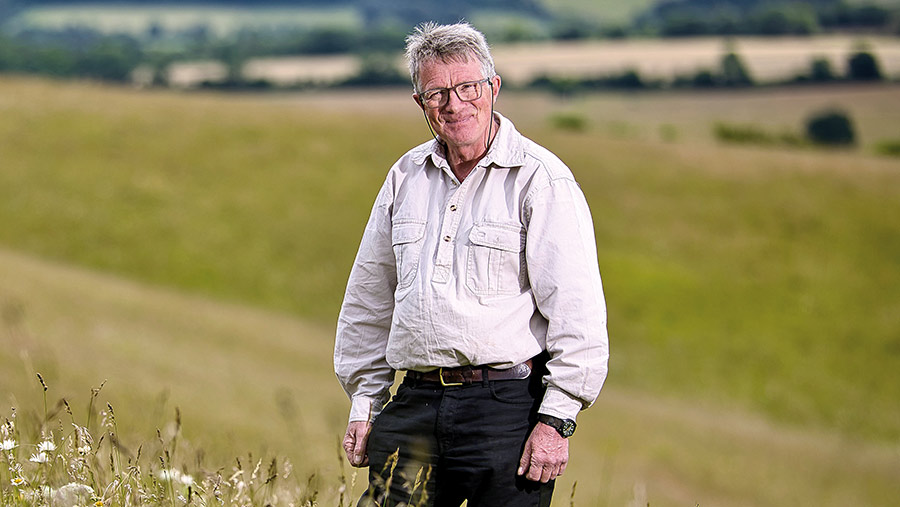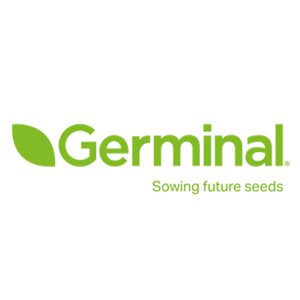How multispecies leys carried cattle through summer drought
 Ian Boyd © Richard Stanton
Ian Boyd © Richard Stanton Deep-rooting legumes and herbs were key to keeping food in front of Ian Boyd’s Hereford herd at Whittington Lodge Farm as the 2022 drought challenged grassland farmers.
Multispecies leys provided fodder for the mob-grazed cattle as the permanent pasture on the Cotswold brash soils turned yellow.
“We used the techniques we have learned over the years – we still moved them every day, but fed extra hay or haylage and let them eat it tighter than we would ideally like, to slow the rotation down,” explains Mr Boyd, the 2022 Farmers Weekly Grassland Manager of the Year.
Farm facts
- 280ha (692 acres) owned and farmed in partnership with landlord
- Organic beef and arable farm
- 45-head pedigree Hereford herd, 100% grass-fed with beef sold directly under the Cotswold Beef brand
- 70ha (173 acres) herbal leys, 65ha (160 acres) wildflower meadows, 50ha (123 acres) spring barley, 35ha (86 acres) permanent pasture and 30ha (74 acres) woodland, plus floristically enhanced grass margins and wild bird seed areas
See also: 8 expert tips for efficiently grazing herbal leys
However, the prolonged dry weather did hinder plans to trial stockpiling of grazing for the first winter.
Reducing conserved fodder
“We seriously want to clamp down on our overwintering costs, because that’s the expense of keeping a cow – making a lot of conserved fodder for it,” he says.
In the current system, cows are fed wildflower meadow hay and Mr Boyd would like to reduce that demand from the 300 2.4m, four-string bales they consume during a five-month winter.
“We are trying not to touch a lot of the grassland in the autumn and manage covers to keep more grass for cattle to go into, but we had a drought, and the autumn flush of grass never came,” he says. He plans to try again in 2023.
They also lost grass in early winter because the rest period required by organic herbal ley rules meant it got too long and stemmy and the cattle refused to eat it.
“I’d like to think that some of these rules in the government schemes will become more outcome-led,” Mr Boyd says.
Feeding communities, not producing commodities
With the farm’s Sainfoin Centre, a multipurpose building in the farmyard, hosting it first events last month, Mr Boyd and his daughter, Steph, hope to be able to welcome many more visitors to the farm to share their story and ethos.
One way of thinking they are keen to counter is that farmers must produce as much as possible.
“Why are we trying to feed the world? The scale of production around the world is so massive compared with our limited output, especially in South America and Brazil.
“As farmers, we ought to concentrate on feeding our local communities, not producing commodities,” he says.
“There is no world food production crisis – though many conventional farmers seem to wish there was.
“There are food distribution and affordability issues. But the problem in the UK is keeping the prices high enough to make farming viable.”
Mr Boyd believes a mindset change is needed if agriculture is to make progress when it comes to environmental matters and achieve the biodiversity and net-zero targets that have been set.
“There is a very real biodiversity and climate crisis in the UK, and there has been for decades.
“My passion for photography has taken me to much of eastern Europe, especially Bulgaria and Romania, where the unspoilt meadows have provided a stark contrast to our nature-depleted countryside,” he says.
The Farmers Weekly 2023 Grassland Farmer of the Year
 Farmers Weekly 2023 Grassland Farmer of the Year Award is sponsored by Germinal.
Farmers Weekly 2023 Grassland Farmer of the Year Award is sponsored by Germinal.
Enter yourself or nominate someone now on our Awards website.
